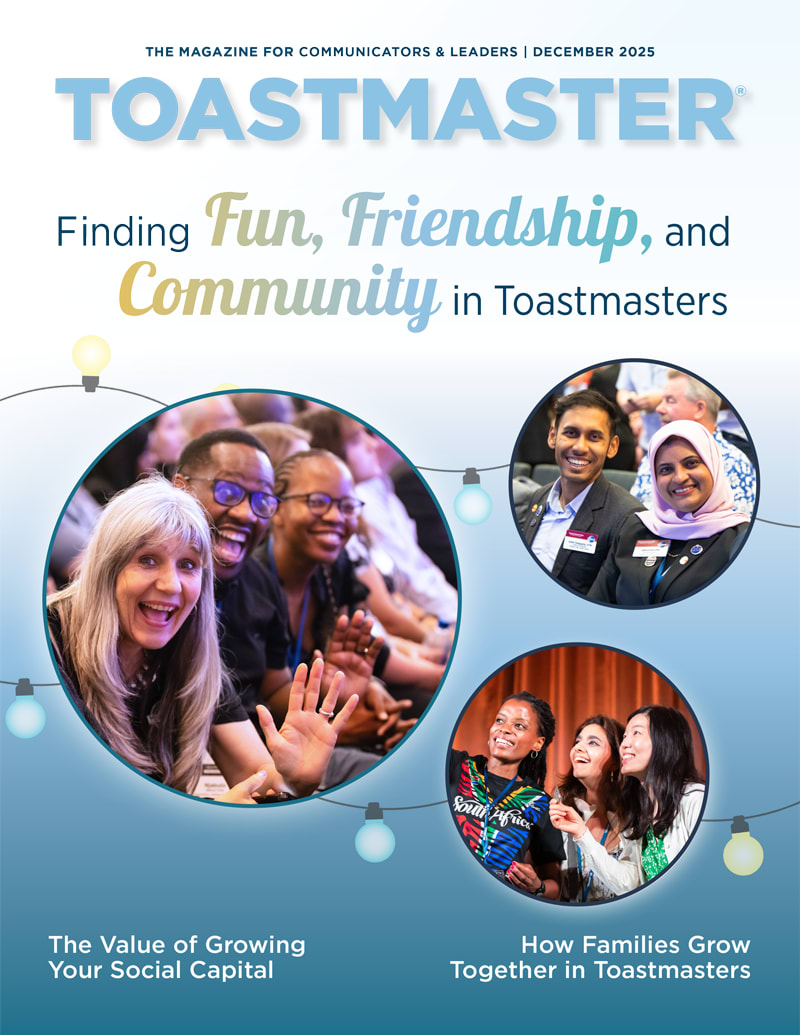
Both in Toastmasters club meetings and in their work lives, speakers often find themselves presenting to “hybrid” audiences that feature some participants attending in person and others logging onto the presentation from home offices or other areas.
Patti Sanchez, a presentation skills trainer and chief strategy officer for Duarte Inc., says speakers need to adopt a different mindset in such hybrid scenarios.
“The way I think about it is if one person is remote then everyone is remote,” Sanchez says. “What often happens is the opposite. When you have an in-person audience your default tends to be playing primarily to that room and you treat the online audience as secondary. I suggest you flip the way you think about it, because there’s nothing worse in a hybrid scenario than being a remote attendee and feeling forgotten.”
That should translate into working harder to put remote attendees on equal footing with their in-the-room colleagues with strategies that keep them engaged and included in sessions, as well as use the kind of presentation technology that ensures they can see and hear speakers as easily as those in the physical room.
“In these scenarios you have two different audiences that are having two entirely different psychosocial experiences,” says virtual presenting expert Roger Courville. “You need to try to design two different experiences and have them meet somewhere in the middle.”
One tactic Sanchez uses to create more “visual equity” is by asking in-person attendees to join their remote counterparts in logging onto presentations virtually through their laptops or other devices.
“The idea is to enable everyone listening to the presenter to see the same thing,” she says. “I also create moments of interaction with both in-person and remote attendees, but I do cater more to the online group.”
Ken Molay, president of the company Webinar Success who trains speakers in online presenting skills, recommends using an assistant in hybrid speeches who has the exclusive job of interacting with the remote audience.
“The assistant should be the proxy for the remote audience, looking at contributions or questions they send in via the technology, summarizing results of online polls, and staying in tune with what the online audience is experiencing and asking,” Molay says. “The assistant should constantly remind you as the primary speaker to keep the remote audience top of mind.”
—Dave Zielinski



 Previous
Previous
 Previous Article
Previous Article